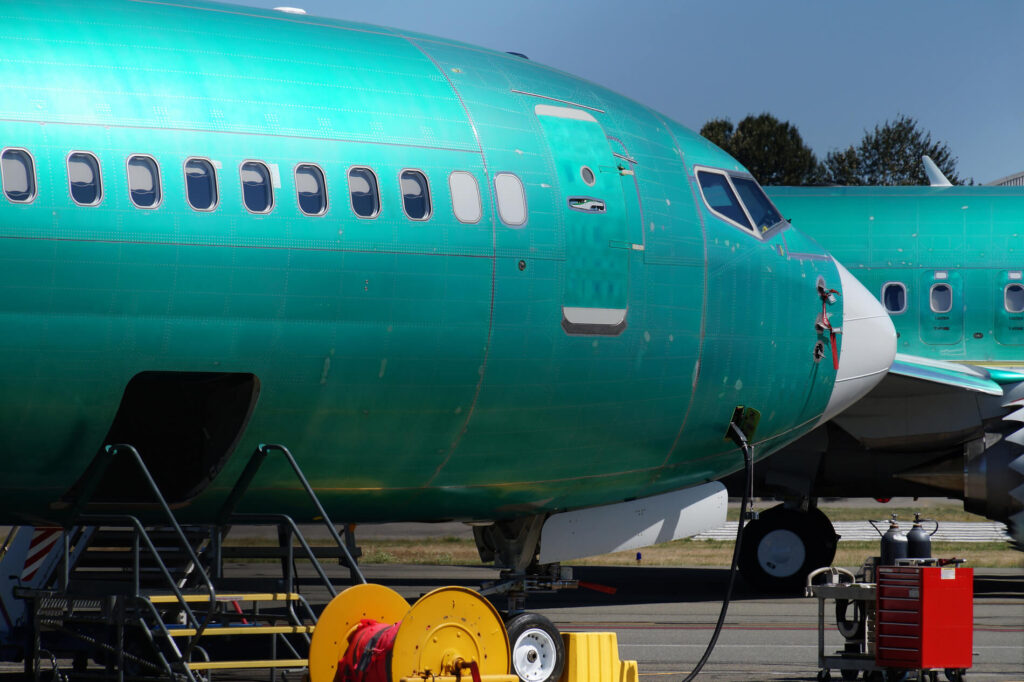The jets have to undergo several rigorous tests before airlines can buy them. This is one of the reasons why air travel is considered one of the safest types of transportation. We decided to reveal what tests the aircraft have to pass before they can enter service.
The main test sets before first take-off
Before it starts carrying passengers, every jetliner goes through thorough tests programs and certification campaigns. The test that planes have to undergo can be split into separate sets, which include structural static tests and flight test sets.
The structural assessment includes flight test installation calibration test, wing flexibility testing, ailerons, and spoilers functioning test during max wing bend, fuselage pressure test, fatigue tests, and flight cycles simulation.
General handling of the jetliner is checked during flight test campaigns. This assessment includes general handling quality testing, operational performance analysis, airfield noise emission, and systems operation in normal mode testing, failure scenarios, and extreme conditions.
The jets also have to undergo special extreme weather condition trials. Usually, the aircraft has to cover a surface between, for example, Northern Canada and the Persian Gulf desert, to check whether it can withstand the temperatures swings from extreme heat to cold. Other tests include water ingestion trials, lightning strike simulations, low-speed take-off tests, flutter, and rejected takeoff and landing. Once all tests are passed, the plane is certified and ready for service.
Wing flexibility testing
When pressure is applied, many modern passenger jet wings can bend and spring back to their initial state, with flexibility. To check this technical ability during testing, wings are bent nearly 90 degrees to make sure they can withstand a bumpy ride. The wing assembly is installed in a steel procrustean bed and is entangled with dozens of dynamometric ties and hydraulic stops. Then the pumps are turned on, and the end section of the wing is pulled upward until it is destroyed.
Fasttailwind / Shutterstock.com
The wings are snapped to make sure their breaking point is beyond the expected load level. In the test for the maximum bend of the wing, a hydraulic rack is built around the “tailless” fragment of the airliner, capable of loading the wing and fuselage 1.5 times more than is the case with the most extreme air maneuvers. To simulate the forces that jet wings experience while flying, during the assessment the technicians can stack bags of sand on top of them, or build a cage-like structure around the airplane to force the wings upwards to determine the breaking point. The plane wings also undergo a fatigue test and static assessments. The fatigue check shows how wings work under regular conditions and static testing analyzes how far a wing can bend before it snaps.
Bird strike testing
As per the International Bird Strike Committee, about one bird-strike accident results in human death in one billion flying hours.
However, small birds can cause engines to stall and explode and cause damage to commercial aircraft, costing some $1.2bn per year. During a regular flight, a plane can encounter a flock or a single bird in the air and it becomes crucial to ensure that cockpit windshields can withstand such conditions and the engine continues to operate. During the test, a high-speed “chicken gun” will throw whole dead chickens at the engine and windshield, to simulate how the machine would respond to live birds.
Water intake testing
Takeoff and landing sometimes occur during heavy rain. During water intake testing planes taxi through the specially designed watery surface to make sure large quantities of water do not enter the engine.
Photographs by JarrahTree…commons.wikimedia.org / CC BY 2.5 AU
Temperature and altitude testing
Planes are brought to extremely hot/cold climates or very high/low altitudes to check that they function normally.
Velocity minimum unstick test
The minimum unstick speed test is considered as one of the most spectacular and the most difficult for pilots. Velocity minimum unstick or VMU is the jet’s airspeed at and above which the airplane can safely lift off the ground, continue the takeoff, and remain controllable.
Von Gyrostat (Wikimedia, CC-BY-SA 4.0), CC BY-SA 4.0
Before the test’s implementation, the crew undergoes additional instructions. When gaining speed during the takeoff, the pilot scrapes a plane’s tail along the runway and carefully lifts the nose of the jet to the sky by 10 ° to determine the minimum speed needed for takeoff. As soon as the speed is determined, it is entered into the control instructions.
Brake testing
Maintaining the landing gear and brakes in order is critical to safety, as during landing the machine is exposed to high-level forces and shocks.
At brake tests, the plane is loaded at its maximum weight and equipped with worn-out brake pads. Then the machine is brought to takeoff speed on the runway before stopping. The wheels should deflate in the high heat, and emergency crews have to wait five minutes to see if the fire spreads to the plane’s body.
Unlike cars, crash tests are not carried out in the civil aviation industry. The only certification crash test of a passenger jet was carried out in December 1984 at Edwards Air Force Base, commissioned by the Federal Aviation Agency. However, the subject of certification in this case was not the aircraft, but the fuel in its tanks.
Operating tests
Even after the plane gets the green light from the regulators and starts commercial flight service, the machine and its engine continue to undergo regular checks and maintenance. Technicians dismantle, clean, and inspect the plane’s engine at regular intervals. They check the machine’s motor, replace the worn parts, reassemble, test it, and re-attach the engine back into the plane. Besides that, before every flight, the pilot or co-pilot in command conducts a visual inspection of the critical parts of the plane, like sensors, probes, structural components, and exposed motors and cables. The preflight check also includes running tests on various systems onboard the plane, such as fire detectors, weather radar, and warning lights.

